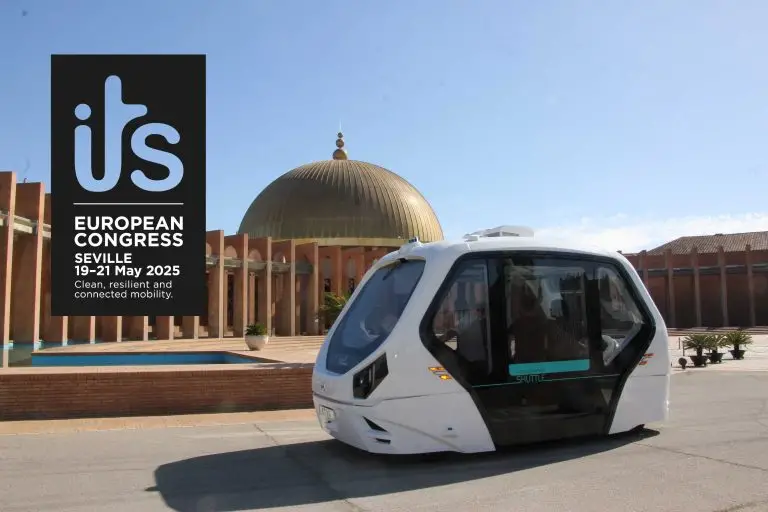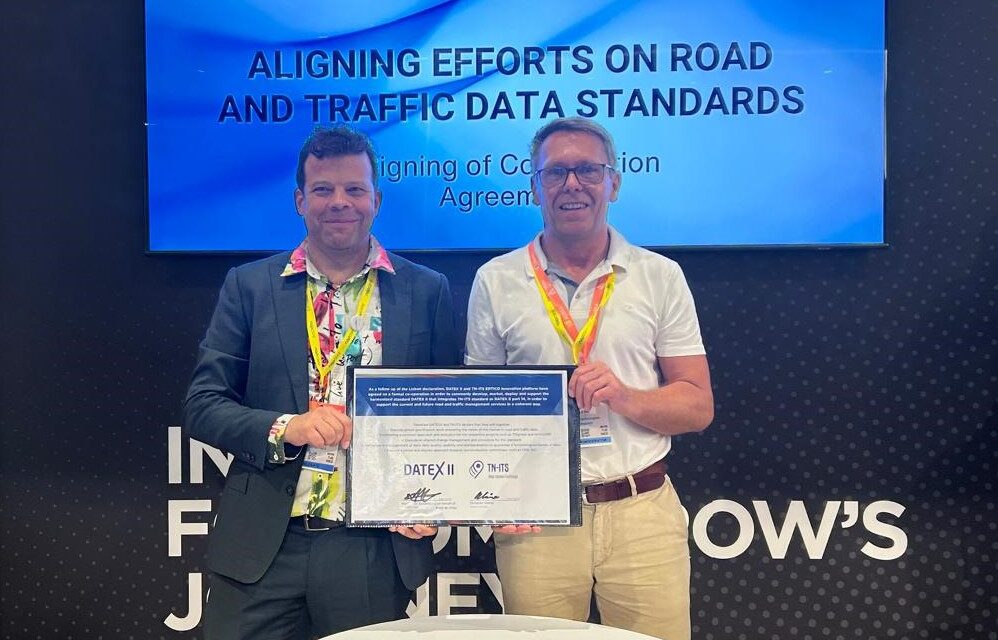- CTAG will present in Seville its autonomous shuttle and the progress of the SINFONICA project, which focuses on inclusive and cooperative mobility.
- The technology centre will showcase connected mobility solutions and demonstrate how its C-ITS technology can improve road safety in real-world conditions.
Vigo, May 19th 2025. CTAG will be an active participant in the 16th European ITS Congress, which will take place in Seville from 19 to 21 May. At this key event for intelligent transport systems, the technological centre will present its latest innovations through live demonstrations and technical sessions, showcasing its autonomous, connected and electric shuttle. The CTAG team will also provide information on its work in electronics, connected and autonomous vehicles, human-machine interfaces (HMIs), interior comfort, and hardware architecture and embedded software, thus reinforcing its position at the technological forefront of the sector.
Among the main activities scheduled, CTAG will participate in the C-ITS Corridor in Seville, a pilot initiative for cooperative mobility involving the deployment of V2X technologies. Use cases such as the protection of vulnerable users, dynamic traffic management and intelligent traffic light priority will be demonstrated in a real urban environment using the autonomous shuttle demonstrator. Technical visits will be held during the three days of the congress, with departures at 12:00 and 16:00.
In addition, CTAG will present the technical paper ‘Deployment of autonomous and connected mobility in the Urban Port District of Seville’, in collaboration with the Port Authority of Seville. The presentation will take place on 20 May, at 11:45h, in the Brussels GH room.
At the ITS Arena, CTAG will hold a 45-minute session to discuss the current deployment, performance and scalability of its Shuttle platform, and its potential future applications in urban and industrial environments.
As a novelty, the technological centre will also showcase an Automated Valet Parking (AVP) system enhanced with infrastructure sensors. This technology enables the vehicle to detect hidden pedestrians using external sensors and react accordingly, thereby improving safety during autonomous parking manoeuvres.
CTAG will be strongly represented at the Congress, both institutionally and technically. The centre’s General Director, Luis Moreno, will take part in the opening ceremony. Francisco Sánchez, Director of Electronics, ITS and Smart Mobility, will also speak at the plenary session dedicated to strategies to accelerate automated mobility. Ana Paul, Director of Technological Innovation, will also participate in one of the scheduled technical sessions.
With more than two decades of experience, CTAG reaffirms its position as a key partner for the automotive industry and the future of mobility, providing technological solutions that promote safer, smarter, more connected and more sustainable mobility.
About CTAG
The Automotive Technology Centre of Galicia (CTAG) is an international benchmark in R&D and Innovation applied to the automotive sector and the mobility of the future. With over 20 years of experience and more than 1,000 professionals, CTAG is a key partner for the industry, developing technological solutions that transform the sector and promote cleaner, smarter, connected and safer mobility.
Its multidisciplinary team and state-of-the-art laboratories enable it to accelerate the digitalisation and modernisation of the sector, leading strategic projects in areas such as autonomous driving, electric vehicles, safety, connectivity, new materials and the factory of the future.
Para más información:
Alejandra Alonso
661418283 aalonso@torresycarrera.com




